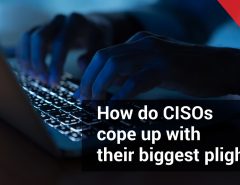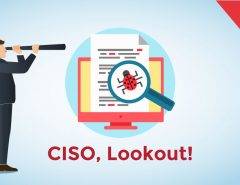Cyber security threats are among the top concerns of an enterprise, with the fear and nervousness fueled by the recent incidents of massive security breaches and ransomware attacks. But what is less well known is that more than half of these security incidents arise due to insider breaches.
And what exactly do we mean by insider breaches? According to the Information Security Forum (ISF), insider threat is a malicious threat to an organization that occurs due to the employees, former employees, or anyone internally associated with the enterprise causing harm to the company’s private and confidential information through Malicious Intent, Negligence or Accident. Insider threat may also involve theft of confidential information, fraud, leakage of valuable commercial information, theft of any intellectual property or destruction to the computer systems.
- Malicious Intent is when a disgruntled employee intentionally breaches security.
- Negligence occurs when the employee consciously circumvents the security guidelines and norms of behavior laid down by the organization, albeit with no malicious intent.
- And it is an Accident if the incident occurs despite no willful violation or negligence on the part of an employee, but due to genuine human error such as clicking a link in a suspicious email, downloading the wrong attachment, or sending an email to wrong recipients carrying personal information.
Enterprises suffer immensely from security breaches. While large corporations with deep pockets have been known to recover from massive breaches at very high costs, while the smaller companies without such deep pockets find themselves staring at the end of the barrel of bankruptcy when faced debilitating incidents.
So what can CISOs do about these insidious breaches, that eat away the organization from inside? Here are a few measures which you can follow:
- Assess insider risk: The first step in dealing with insider threats is to assess the risk the organization faces. There are various methods of assessing risk. Accurately assessing the risk paves the way for handling it according to well-defined methodologies.
- Apply controls: Once the risk has been assessed, steps must be taken to control the risk, by applying predefined technical and managerial controls. Identity and access management, data loss prevention (DLP), encryption of important documents, preventing emails containing important or confidential documents, and so on. Management control includes roles and responsibilities segregation, audits, reviews, and so on.
- Align appropriate privileges to individuals: This is the general principle that should be followed by the decision makers of the organizations. It is really important to give privileges to your company’s employees, but there are certain things which should be taken care of. CISOs need to take care of the cloud-based applications and BYOD policies. The company should provide required privileges to its employees for transparent communication while at the same time monitor the changes happening internally. An employee of the organization should always have access to all the benefits that his role demands. Moreover, always remember to revoke all the privileges and access of the employees who have left the organization.
- Foster a culture of trust: Employees must feel trusted and responsible for the organization’s security. This trust has to be earned by giving them the appropriate assurances and by making them feel important to the company’s future plans and growth.
- Make the insider threat program more comprehensive: This includes addressing all the three types of insider threats, addressing the threat at every stage of the employee life-cycle, and by improving the culture of trust.
While there are many people from various sectors including government and military who need help in dealing with insider threats. The above mentioned comprehensive steps from the ISF can be very helpful for multiple domains in handling the insider threats. Moreover, in order to deal with the insider threats completely, you can opt for award-winning security solutions such as Seqrite’s Endpoint Security (EPS).
Seqrite EPS provides enhanced security while addressing and preventing data loss caused due to insider threats. It is a comprehensive product that blocks sources of malicious or accidental breaches. This solution offered by Seqrite addresses a wide array of insider threats aspects including mobile device security, application and device control, web filtering, ransomware protection and so on. Seqrite’s Endpoint Security is a trusted product in dealing with the mounting perils of insider threats.
Seqrite helps businesses simplify IT security and maximize business performance. To know more about our products and services visit our website.




